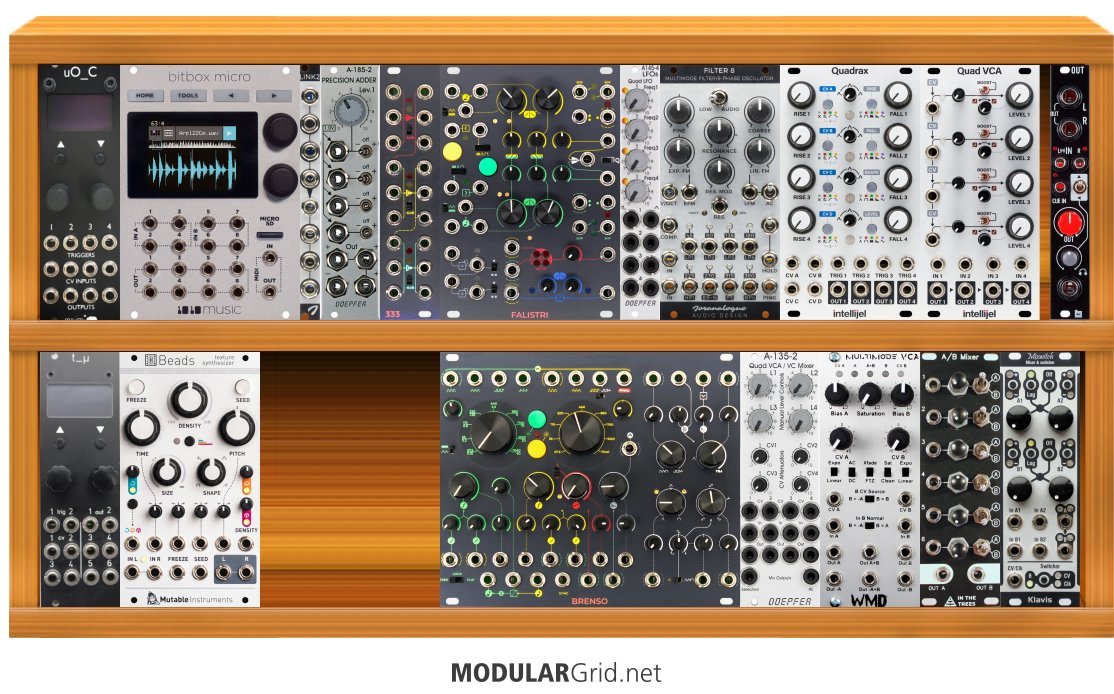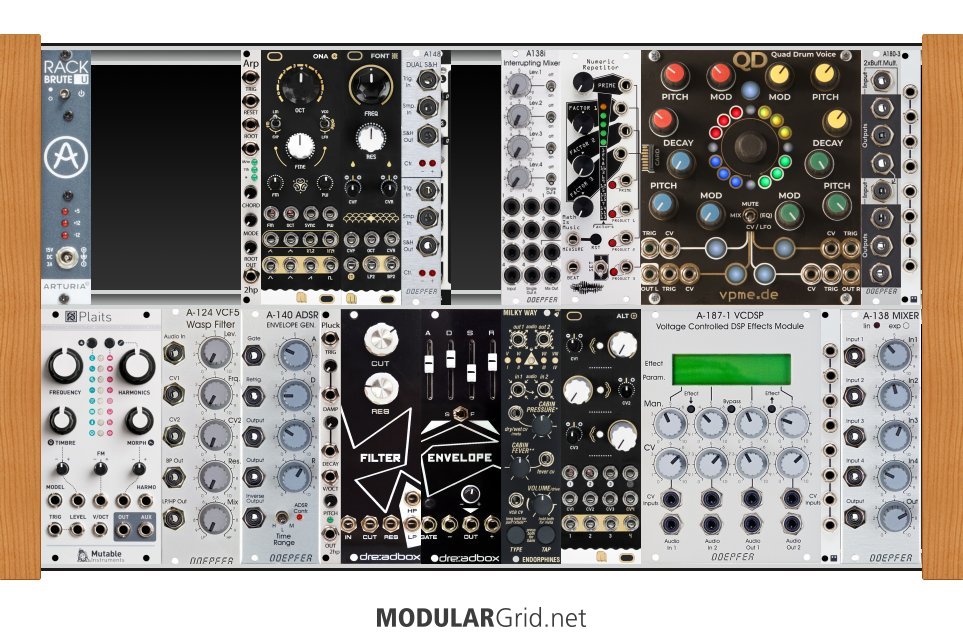I'd add a matrix mixer, fx aid xl and something that can do offsets and inversion (3*MIA, perhaps) [...] - I have multiple problems with the frap tools modules, but that's just me - although I'm sure they are great... I think bresno is way too big for a case this size - as there's not enough room left over for modules to support it - add another row, though and it'd be substantially better
-- JimHowell1970
Hey Jim, big thanks for the case update, that's really helpful, especially as I can see it in action with your rack image, brilliant. The WMD Tool-Box looks really interesting, I hadn't thought of that. In fact due to this I'm going to have a much deeper look at the WMD modules, they look as though they have a very nice range indeed. And, oddly enough, I had the Happy Nerding modules in my original 'idea' when first starting. Somehow, they got forgotten along the way, so thanks for the reminder. Lastly, I'm glad the In the Trees A/B Mixer's still in there, I also thought that it looked basic, but so useful.
So, just to add a comment, the Brenso is (as I said) just an idea at present, so indeed, as Lugia says, if I want to go down that path for less money, I could try out the Tiptop/Buchla 258t. Of course, if it can do the same thing for a third of the price I'd be very happy - as many would. Another couple of possibilities which look interesting (I think) are the Gravitational Waves by Void Modular, and the Intellijel Rubicon 2, or something else (not quite the same, but) which looks very versatile the 4ms Ensemble Oscillator.
As for another row ... I've got that covered, I've also got a 104hp skiff that's empty (or used as needed). So, I could expand even more at a later date.
As for the symbols and layout of Frap Tools discussion, I don't really see why people get so wound-up about them. FT are trying to do their own thing, like plenty of other makers out there - who BTW also have wacky images and odd layouts. I bought the Falistri due to recommendations here, and have to say I love it. Once you see how they've laid it out, it's very very easy to use, and logical. The quality of the build of their stuff (from what I've seen) is very good.
Lastly (@Lugia), don't worry about the CWEJMAN VCA-4MX, I just thought it looked interesting and it clearly is, but too expensive, which you mentioned on another thread (I think). However, luckily everyone here who's answered my questions, has come up with some alternative solutions which gives me plenty of ideas/solutions as where to move next on my set-up.
Very big thanks to all.





